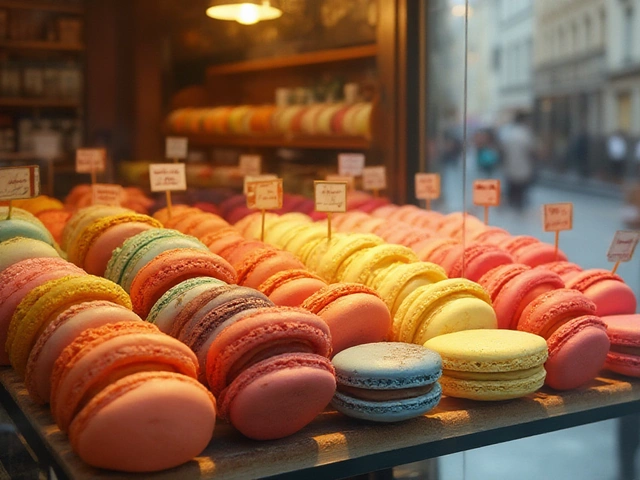Italian Pastry: History, Favorites, and How to Nail Them at Home
If you love sweet treats, Italian pastry is a must‑try. From creamy tiramisu to crunchy biscotti, each bite tells a story of regional flavors and tradition. In this guide you’ll learn which pastries are worth mastering, why they matter, and how to keep them fresh.
Classic Italian Pastries You Should Know
Tiramisu is the poster child of Italian dessert. The name means “pick me up” in Italian, a nod to its coffee‑and‑cocoa kick. Layers of espresso‑soaked ladyfingers, mascarpone cream, and cocoa create a light yet indulgent slice. Freezing tiramisu works well if you wrap it tightly; thaw it in the fridge overnight for the right texture.
Cannoli come from Sicily and feature a crisp, fried shell filled with sweet ricotta. The shell should stay crunchy, so fill them just before serving. A quick tip: dust the ends with powdered sugar and a pinch of cinnamon for extra flavor.
Sfogliatella (or “lobster tail”) is a Naples favorite. Its many flaky layers hide a citrus‑spiced ricotta filling. The secret to perfect layers is keeping the dough cold and rolling it thin. Bake until golden, then let it cool on a rack so steam escapes and the pastry stays crisp.
Biscotti are the go‑to cookie for coffee lovers. They’re baked twice, which gives them that dry, crunchy bite. Slice them on the diagonal after the first bake, then finish the second bake. Store in an airtight tin for weeks; they actually improve with age.
Panettone shows up at holidays but can be enjoyed anytime. This tall, buttery loaf is studded with raisins and candied orange. It relies on a slow, steady rise, so give the dough plenty of time to ferment. A slice toasted with a smear of mascarpone is pure comfort.
Practical Tips for Making & Storing Italian Pastries
Temperature matters. For custard‑based fillings like tiramisu, keep the fridge at 4 °C (39 °F) to prevent spoilage. If you notice any off smell or texture, it’s safer to discard.
When you bake, avoid opening the oven door too often. The sudden temperature drop can cause puffed pastries like cannoli shells to collapse. Use a light‑colored oven mitt to check the color without pulling the door.
Ingredient quality is non‑negotiable. Use real mascarpone for tiramisu and fresh ricotta for cannoli; shortcuts change the flavor dramatically. A quick taste test of the cheese before mixing will alert you to any bitterness.
For long‑term storage, wrap pastries tightly in plastic wrap and then a foil layer. This double barrier keeps moisture out and flavor in. Frozen biscotti can be re‑crisped in a hot oven for a few minutes.
Finally, enjoy the process. Italian pastry is as much about the love you put in as the ingredients. Grab a cup of espresso, roll up your sleeves, and treat yourself to a slice of Italy at home.
Who Invented Cannoli? The Sweet Story and Origins of Italy's Iconic Dessert
Ever wondered who invented cannoli? Dive into the real history, myths, and surprising origins of this legendary Italian dessert—plus foodie tips.
View More




